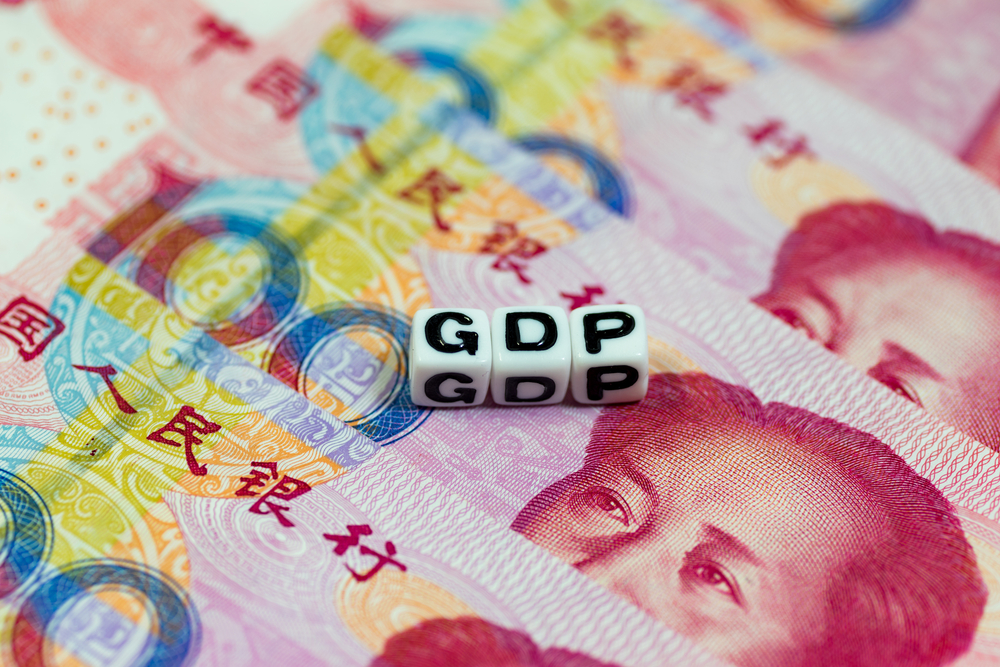During the Asian trading session on Monday morning, China’s latest GDP figures became available for analysis. The economy grew by 6.5% during the final quarter of 2020, beating the consensus forecasts of 6.1%, rising from the 4.9% recorded during Q3 2020. Industrial production grew by an impressive 7.3% year-on-year up to December 2020, the best performance since March 2019.
China’s economy is now growing at pre-pandemic levels, and this should be a sobering lesson to Western countries regarding how to control the COVID-19 economic fallout. GDP growth in China for 2020 totalled 2.5%, the lowest for decades, but light years ahead of European countries and the US who will print negative GDP figures for 2020. The Shanghai index rose by 0.80% after the data was published, printing fresh highs not seen since the first quarter of 2015.
Both Germany’s DAX 30 and France’s CAC 30 indices closed the day out up on Monday. European financial markets experienced positive sentiment after Germany’s COVID-19 test figures fell sharply. However, weekend case and death figures are notoriously unreliable due to weekend reporting lagging.
US markets were closed for a bank holiday on Monday, Martin Luther King Day, two days before Biden becomes sworn in as the 46th president of the United States. Futures for the NASDAQ and the SPX 500 were positive, while the dollar index DXY traded up marginally by 0.03%, just above the key handle of 90.00 at 90.80.
Oil continued the fall witnessed over recent sessions. At 6 pm UK time WTI oil traded -0.67% down just above the $52 a barrel level at $52.03. The commodity is up 7.23% year-to-date based on an improvement in global commercial sentiment.
During Monday’s trading sessions, precious metals recovered some of the lost ground given up over recent weeks. Gold whipsawed in a wide range, initially plunging through S1 during the Asian session, recovering to trade close to the daily pivot point and up 0.60% on the day. Silver followed a similar recovery trading pattern to trade up 0.87%. Gold is down -3.10% and silver down -5.07% year-to-date.
The major currency pairs traded in tight ranges during the day’s sessions, except for USD/JPY which traded in a wide range, oscillating between initial bullish and then bearish sentiment. USD/JPY traded -0.18% down at 103.70. GBP/USD and EUR/USD traded in tight ranges, below the daily pivot points. Cable recovered to trade up 0.07% at 1.358, after printing a daily low of 1.351. EUR/USD was flat during the New York session, trading at 1.207.
Economic calendar events to closely monitor on Tuesday, January 18
Several European countries and the UK post their new car sales/registration data during the London-European trading session. France and the UK are forecast to report car registrations falling by close on -27% yearly.
Analysts will scrutinise the latest ZEW economic sentiment figures for Germany, and the wider Eurozone, when the data gets published at 10 am UK time. Reuters forecast Germany’s reading to come in at 60, with the EZ metric predicted to come in at a similar measure. The euro could react negatively if the figures come in worse than forecast.
The Canadian dollar CAD will experience more volatility and trading volume when the latest manufacturing and wholesale sales figures get published for Canada in the afternoon. Both data points should reveal falls from the previous month.
In the evening, the Bank of England’s chief economist, Andy Haldane, will deliver a report on the UK economy’s current state. His statement could affect the value of GBP versus its currency peers. Mr Haldane has a reputation for optimism; therefore, he’ll probably state that the economic recession won’t be as bad as previously predicted and that growth (fuelled by the vaccines working) will roar back from Q3 onwards. Sterling could react positively.
Two essential sentiment readings for the Australian economy get published in the Sydney trading session. The Westpac consumer confidence index and the index change will get closely analysed for economic weakness signs. If the readings miss or beat forecasts the value of AUD could alter versus its peers.


